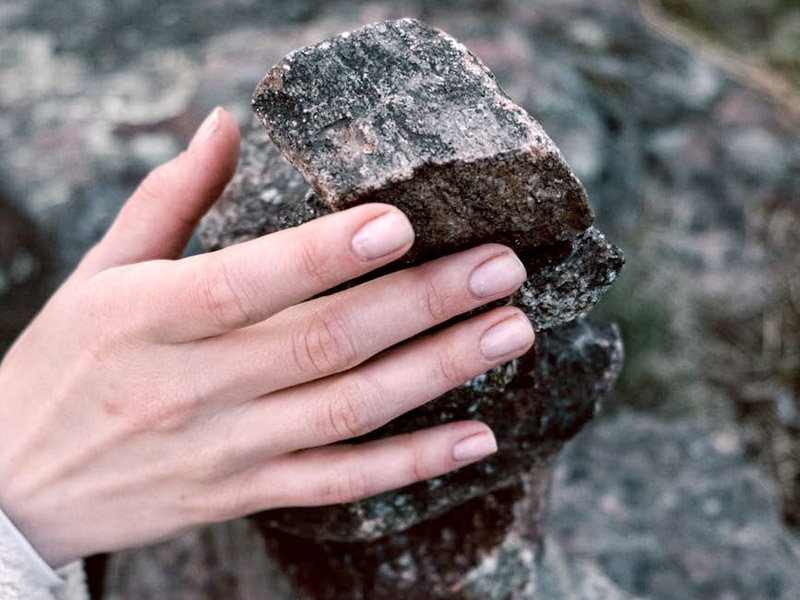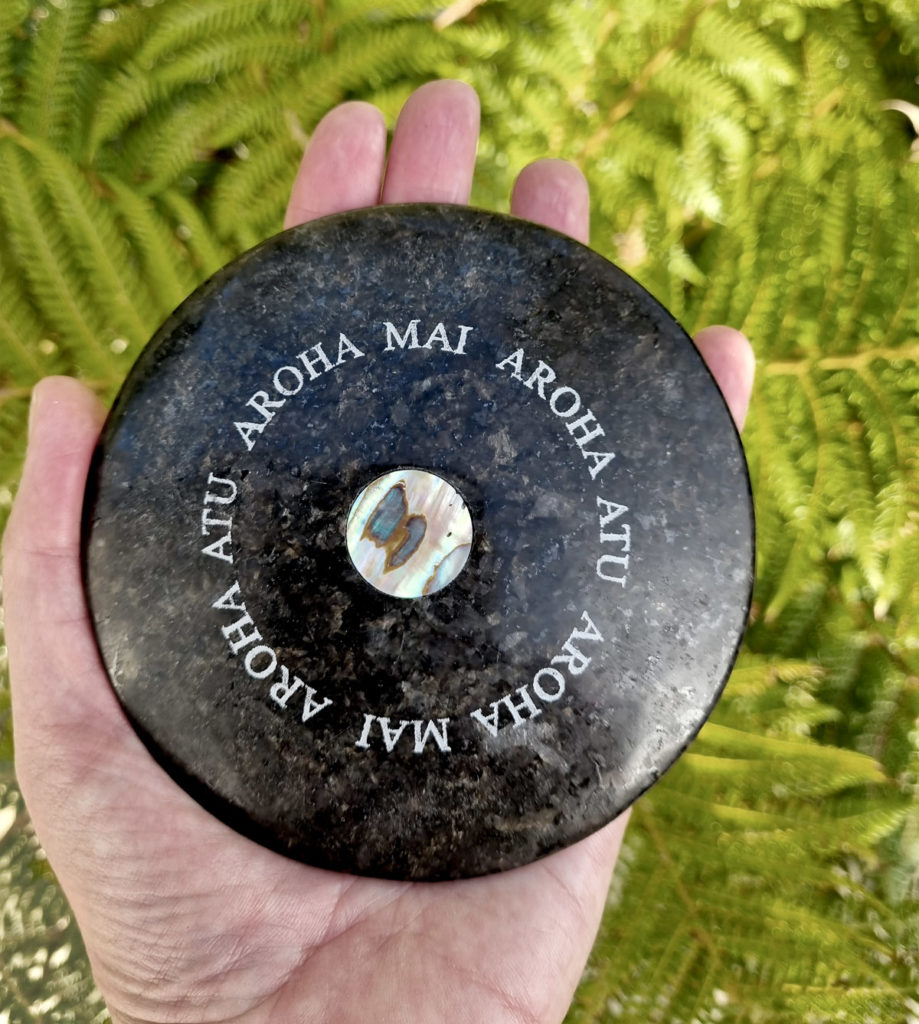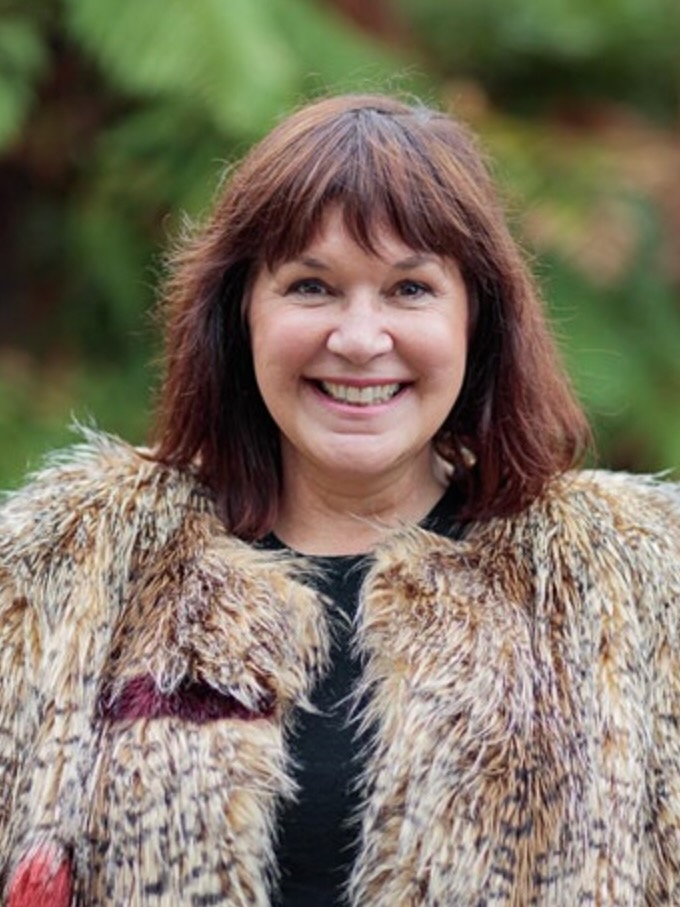
by Professor Chellie Spiller, Fellow, International Leadership Association
- 2 March 2022
Share:
In The Hidden life of Trees, Wohlleben (2016) takes readers on a fascinating journey into how trees communicate, socialize, innovate, discriminate, and cooperate. A foray into the secret life of leadership rocks would tell an equally captivating story of alchemical transformation and provide a fascinating record of events that were key to their transformation. Reflecting their immense power, rocks are referred to frequently in leadership literature — from “bedrocks” to “big rocks” and “touchstones” to “cornerstones.” In Aotearoa, rocks occupy an important space in Māori culture. This Indigenous wisdom can raise intriguing questions for leaders and offer deeper insight into the power of rocks.
“Don’t look at the rock, look at the crystal it is becoming.” – Indigenous Māori Philosopher M. Marsden (2003, p. 45)
One of the chapters in The Secret Life of Leadership Rocks would be dedicated to metamorphic processes, exploring the creative tension between who we are and who we are becoming. In rock-speak, this is dynamic mineralization with contextual forces, a curious mix of ingredients that forges transformation. As a leader, what is the crystal you are becoming? What are the personal, organizational, and community contexts that are shaping you and driving your transformation?
Touchstones / Sacred Stones
In Wayfinding Leadership, my co-author and captain of the ocean-going double-hulled sailing waka Haunui, Hoturoa Barclay Kerr, explains that stones nestled at the base of the mast “are the spiritual power packs on a waka charged by the vibrations from the mast, and are thus considered as repositories of vitality for connecting to wairua, spirituality.” They are touchstones to the lands that the wayfinders have come from and the places they have been. He calls these stones the “immortals.” They are a ritual recognition of relationships. As he reflects: “These toka [stones] embody the love we have for our ancestors, our land and what we do. They are a common factor that binds us all together” (Spiller et al., 2015, pp.117-118). As a leader, what connects you to your past that you want to carry forward as you set out into your future? What powers your forward momentum?
In New Zealand, a sacred stone is a “mauri stone.” For Māori, the term “mauri” means life force, vital essence, an energy that “is immanent in all things, knitting and bonding them together” (Marsden, 2003, p.47). There are many examples of mauri stones used in public spaces in New Zealand — all expressing and engendering community bonds and connection.
For example, a mauri stone accompanies the New Zealand national rugby team, the All Blacks, wherever they play — home or abroad. The mauri stone embodies the team’s mana (dignity, power) and offers them protection in their travels and on the field. When they are not playing, it is cared for by “The All Blacks Experience,” located at Sky City in Auckland, until the team is ready for their next big game. Phil McGowan, General Manager of the exhibit, says, “Guests are encouraged to touch the stone, as it collects positive thoughts and wishes which can enhance the way the team co-operate on the field” (Triponel, 2021). What do you do to help bring your team together? As a leader, how do you create greater co-operation that uplifts the organization even in challenging circumstances?
A mauri stone is often laid at the foundation of a new building in New Zealand to respect, protect, support, and nurture the land, buildings, people, and processes that will take place (for more about mauri, life-force, in organizations click over to my previous blog). Mauri stones are at work in hospitals, universities, meeting grounds, and other places of significance. They protect, energize, restore, heal, cleanse, empower, and transmit. They connect people with context and each other. Three such examples include a memorial to the Christchurch earthquakes, the Auckland Museum, and the Supreme Court.
Devastated by earthquakes in September 2010 and February 2011, a mauri stone sits at the entrance to the memorial erected in Christchurch. The mauri stone, called “Mauri Tau Mauri Ora,” serves to connect “visitors to the whenua [land] and to those who have been before them.” Tribal representative from Te Rūnanga o Makaawhio, Susan Wallace, says, “the stone carries mana and mauri of its own, the water brings its cleansing wairua [spirit], and this is shared by everyone who touches it. There should be a sense of connection — whanaungatanga — a kinship or relationship gained through shared experiences, and the feelings the memorial invokes in all who visit it” (Rewi, 2017).
The Auckland Museum’s mauri stone is buried beneath the building where “silently and invisibly, it regulates the energy flowing in, out and around the building and whenua [land], providing guardianship to all who are in the Museum – people and taonga [treasures]” (Auckland Museum, n.d.). Laid in the grounds of the Supreme Court, a mauri stone represents “the life force or the essence not only of the building but also of the important work that will be conducted there in the future,” according to former Minister of Parliament, Hon Georgina te Heuheu (2009). What is the essence of your organization? What purpose is buried at its heart? How do you honor and operationalize that purpose?
What would be the story of your secret life of leadership rocks, and what could it be in the future, if you truly tapped into their power for transformation?

Mauri Stone inscribed with “Aroha Mai Aroha Atu,” meaning “Love Received, Love Returned” All rights reserved, C. Spiller, 2022.
Rock References in Leadership Literature
While I’ve teased out some of the questions that The Secret Life of Leadership Rocks can pose to leaders, what further wisdom can this spiritually imbued perspective of rocks shed on the practice of leadership? To get to the answer, let us reflect on common rock references in leadership literature.
In transformational leadership circles, “vision and visionary leadership is a touchstone” that is “a source of energy” that can powerfully infuse an organization (Küpers & Weibler, 2006, p. 375). What is the strength of your vision — is it worthy of being called a “touchstone” — a standard by which vision is recognized?
Proponents of servant leadership agree on the importance of having cornerstones. Values such as compassionate love, service, trust, and credibility are some of the cornerstones that anchor a servant leader (van Dierendonck & Patterson, 2015; Farling et al., 1999). Are your values strong enough to be cornerstones on which your vision and activity are based?
Popularized by leadership author Stephen Covey, the idea of “Big Rocks” challenges leaders to focus on what really matters — the key priorities such as crucial relationships, responsibilities, and projects — and not fill their days with the gravel of lesser minutiae (Nevins , 2020). What are your Big Rocks? Do you have enough but not too many, and are they truly important and reflective of your vision (touchstone) and values (cornerstones)?
Listening is “the bedrock of leadership excellence,” says management guru Tom Peters (Dooley, 2018). Listening is a fundamental principle (bedrock) on which outstanding leadership is based. So, how solid is your listening rock? How well have you listened to those you lead, your organization, and your stakeholders? And how well have you heard your inner teacher, your soul? Do you appreciate and make a strong stand for the crystal that others and you are becoming?
Four-times Pulitzer Prize finalist in creative non-fiction, John McPhee, writes that “rocks are records of events that took place at the time they formed. They are books. They have a different vocabulary, a different alphabet, but you learn how to read them” (McPhee, 1993, p.19). What would be the story of your secret life of leadership rocks, and what could it be in the future, if you truly tapped into their power for transformation?
The ideas presented in this article are placed as an offering on the whāriki (mat) of the field of leadership in organizations to support inquiry into more humanistic, spiritual, and relational ways that attend to sources of wellbeing. In my next ILA blog, I will be exploring The Secret Life of Leadership Rocks Part 2.
My heartfelt thanks to Debra DeRuyver and Rodger Spiller for their support in polishing this article. Thank you both.
References
Auckland Museum. Tikanga in Te Ao Mārama, the South Atrium. https://www.aucklandmuseum.com/your-museum/south-atrium/tikanga
Dooley, R. (2018, June 6). What’s the One Word Business Guru Tom Peters Writes on His Hand Before Meetings? Forbes. https://www.forbes.com/sites/rogerdooley/2018/06/06/tom-peters/?sh=2cb0172c6cca
Farling, M. L., Stone, A. G., & Winston, B. E. (1999). Servant Leadership: Setting the stage for Empirical Research. Journal of Leadership & Organizational Studies, 6(1–2), 49–72. https://doi.org/10.1177/107179199900600104. As cited in Birkenmeier, B., Carson, P.P. and Carson, K.D. (2003). The Father of Europe: An Analysis of the Supranational Servant Leadership of Jean Monnet. International Journal of Organization Theory & Behavior, 6(3), 374-400. https://doi.org/10.1108/IJOTB-06-03-2003-B005
Küpers, W. and Weibler, J. (2006). How Emotional Is Transformational Leadership Really? Some Suggestions for a Necessary Extension. Leadership & Organization Development Journal, 27(5), 368-383. https://doi.org/10.1108/01437730610677972
Marsden, M. (2003). The Woven Universe: Selected Writings of Rev. Māori Marsden. Otaki, N.Z.: Estate of Rev. Māori Marsden.
McPhee, J. (1983). In Suspect Terrain (Vol. 2). The Noonday Press Farrar, Straus & Giroux.
Nevins, M. (2020, January 21). What Are Your Big Rocks? Forbes. https://www.forbes.com/sites/hillennevins/2020/01/21/what-are-your-big-rocks/?sh=4ae045f4fae3
Rewi, A. (2017, July 3). The Right Stone. Te Rūnanga o Ngāi Tahu. https://ngaitahu.iwi.nz/our_stories/the-right-stone-tk74/
Spiller, C., Barclay-Kerr, H., & Panoho, J. (2015). Wayfinding Leadership: Ground-Breaking Wisdom for Developing Leaders. Huia Publishers.
Te Heuheu, G. (2009, March 4). Mauri Stone Laid at New Supreme Court. Beehive.govt.nz. https://www.beehive.govt.nz/release/mauri-stone-laid-new-supreme-court
Triponel, T R. (2021, April 6). All Blacks Hold Ceremony to Gift Mauri Stone to All Blacks Experience. NZ Herald. https://www.nzherald.co.nz/kahu/all-blacks-hold-ceremony-to-gift-mauri-stone-to-all-blacks-experience/NXV46SUTJHK676IXPEQXI2KPAU/
van Dierendonck, D., Patterson, K. (2015). Compassionate Love as a Cornerstone of Servant Leadership: An Integration of Previous Theorizing and Research. Journal of Business Ethics 128, 119–131. https://doi.org/10.1007/s10551-014-2085-z
Wohlleben, P. (2016). The Hidden Life of Trees: What They Feel, How They Communicate —Discoveries From a Secret World (Vol. 1). Greystone Books.

Chellie Spiller is a professor of leadership at the University of Waikato Management School, Aotearoa New Zealand. Her research explores wayfinding, authentic leadership and how businesses can create sustainable wealth and wellbeing. Chellie is a co-author of a book on traditional Polynesian navigation Wayfinding Leadership: Groundbreaking Wisdom for Developing Leaders (2015) with Hoturoa Barclay-Kerr and John Panoho. Wayfinding Leadership is a best-selling book for Huia Publishing. It was shortlisted for the Māori Book of the Year awards, 2016. Wayfinding Leadership is included in the list of 150 books by leading Māori authors assembled by the Royal Society of New Zealand to celebrate 150 years of Māori non-fiction publications. Wayfinding Leadership has catalysed a new approach to leadership development that is growing fast and programmes are currently being taught nationally and internationally. In 2013 her co-edited book with Donna Ladkin, Reflections on Authentic Leadership: Concepts, Coalescences and Clashes (Edward Elgar Press) was short-listed for an international leadership book award. Chellie’s latest book is Practical Wisdom, Leadership and Culture: Indigenous, Asian and Middle-Eastern Perspectives co-edited with Ali Intezari and Shih-Ying Yang. The stories from contributors around the world are illuminating and inspiring.


